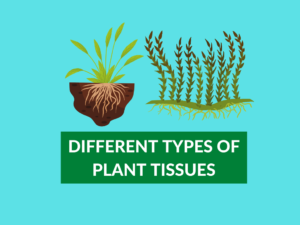Difference Between Simple and Complex Tissue
Have you ever wondered about the different types of tissues that make up the complex machinery of your body? Tissues are a group of cells that work together to perform a specific function. They can be categorized as simple or complex tissue based on their structure and function. In this article, we will explore the characteristics, examples, and uses of simple and complex tissues and highlight their key differences.
What is Simple Tissue?
Simple tissue is composed of identical cells that perform a common function. It is found in areas of the body that require a uniform structure for a specific purpose. Simple tissue can be further classified into different types based on the shape and arrangement of cells.
Examples of Simple Tissue:
Simple Squamous Epithelium: This tissue forms a thin, delicate lining in organs such as the lungs, blood vessels, and heart.
Simple Cuboidal Epithelium: It consists of cube-shaped cells and is present in glands, kidney tubules, and ovaries.
Simple Columnar Epithelium: Found in the lining of the digestive tract, this tissue helps in the absorption of nutrients.
Uses of Simple Tissue:
Simple tissues have various functions depending on their type. For example, simple squamous epithelium allows for diffusion and filtration, while simple columnar epithelium aids in absorption and secretion. Simple cuboidal epithelium, on the other hand, contributes to the production and movement of secretions.
What is Complex Tissue?
Complex tissue, as the name implies, is composed of different types of cells that work together to perform a specific function. It integrates various cell types to achieve a more specialized and complex structure, enabling the tissue to carry out specific tasks effectively.
Examples of Complex Tissue:
Xylem: A complex tissue in plants responsible for transporting water and minerals from the roots to other parts of the plant.
Phloem: Another plant tissue that transports food, such as sugars, produced during photosynthesis to different parts of the plant.
Cardiac Muscle Tissue: Found in the heart, this tissue enables the pumping of blood throughout the body.
Uses of Complex Tissue:
Xylem and phloem tissues support plant growth by facilitating the transport of essential substances. Cardiac muscle tissue, on the other hand, ensures the proper functioning of the heart by contracting and relaxing rhythmically to pump blood.
Differences Between Simple and Complex Tissue:
| Difference Area | Simple Tissue | Complex Tissue |
|---|---|---|
| Structure | Composed of identical cells | Composed of different cell types |
| Functionality | Performs a common function | Performs a specialized function |
| Arrangement | Cells arranged in a homogeneous manner | Cells arranged in a heterogeneous manner |
| Cell Types | Contains only one type of cell | Contains multiple types of cells |
| Location | Found in areas requiring a uniform structure | Found in areas requiring a specific function |
| Examples | Simple Squamous Epithelium, Simple Cuboidal Epithelium, Simple Columnar Epithelium | Xylem, Phloem, Cardiac Muscle Tissue |
| Cell Shape | Shapes vary based on the type of simple tissue | Shapes differ based on the type of complex tissue |
| Specialization | Low degree of specialization | High degree of specialization |
| Function | Performs basic body functions | Performs complex and specialized functions |
| Cell Communication | Minimal cell communication required | Extensive cell communication and coordination |
Conclusion:
In summary, simple tissue consists of identical cells performing a common function, while complex tissue comprises different cell types working together to execute specialized functions. Simple tissue is characterized by a uniform structure, whereas complex tissue exhibits a heterogeneous arrangement. The degree of specialization, cell communication, and functionality are also significantly different between the two types.
People Also Ask:
1. Can simple tissue perform specialized functions?
No, simple tissue performs basic functions required by the body.
2. What are the characteristics of simple tissue?
Simple tissue is composed of identical cells, has a uniform structure, and performs a common function.
3. Are complex tissues found in plants?
Yes, complex tissues like xylem and phloem are found in plants and contribute to their growth and sustenance.
4. Do complex tissues have multiple cell types?
Yes, complex tissues consist of various cell types working together for a specialized function.
5. Can simple and complex tissues be found in the same organ?
Yes, organs can contain both simple and complex tissues, depending on the specific functions they need to perform.


